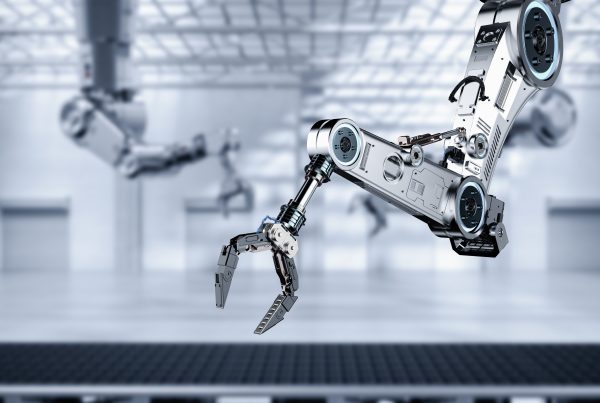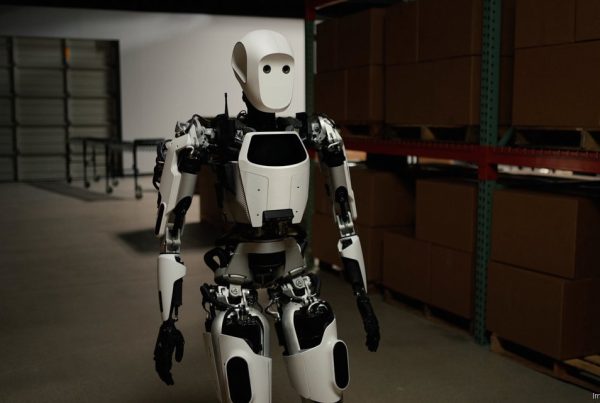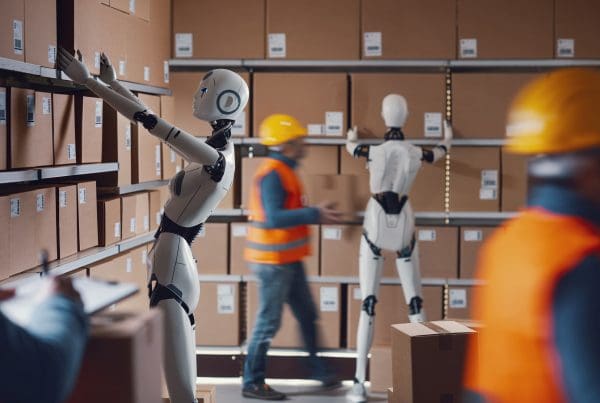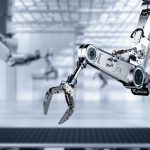工业自动化 机器人 & 仓储自动化
2022-04-28
工业机器人市场重启增长

MAYA XIAO
Maya在电动汽车、自动化系统和机器人领域拥有跨学科的技术背景,现担任Interact Analysis的研究经理,负责锂离子电池、叉车、工业和协作机器人市场等研究。
Industrial robots used to be a mature market. That’s changed. COVID-19 has turbo-charged factory automation, transforming robots into an exciting, fast-growth area again, and one that’s attracting considerable new investment.
Maya Xiao, senior analyst at Interact Analysis, explains how and why:
Maya, talk us through what’s happening…
The turnaround is massive, and it’s all the more notable because, in the run up to 2020, the sector had actually seen two years of contraction (2019-20 saw revenues down 10%, for example). In 2021, the market saw an unprecedented 25% growth, and we forecast growth rates of ~10% for the next few years after that. This is compared to the normal growth rates of maybe 5-6% a year that we would have expected pre-2018.
Indeed, the change in the market is so strong that lots of well-established companies in the industrial robot value chain are coming to us to get an understanding of the new market forces that have come into play. Our advice to robot companies is simple: prepare for much stronger long-term growth than you’ve been used to in recent years.
Do you see any new market opportunities opening up for industrial robots at the moment?
Generally it’s the same industries that have always used them – industries such as electronics, automotive, chemicals, food & beverage, and rubber & plastics. The difference we see in their demand now is twofold:
Firstly, there is an increase in the number of robot users. Even in the heavily robotised industries listed above, there were many holdouts which did not use robots. This is changing fast. In many such companies, robots had accounted for less than 10% of their equipment investment, but this will increase to 20%-30% during the forecast period.
Secondly, in those which were already heavy robot users, we are seeing robots deployed into many new applications, such as 3D bin picking with machine vision. These new applications have also caused robot manufacturers to release new robot models that are more suitable for these new applications because they are smarter, lighter, and more flexible.
Can you give more detail on growth rates for the next five years and beyond?
Here in China we’re in the midst of a massive new wave of the pandemic – as I write this, I am personally in the middle of a four week lockdown in my flat in Shanghai, during which I cannot go outside. Yet we still forecast 20% industrial robot market growth for China in 2022. The outlook globally also looks healthy up to 2026 and onwards.
In 2023-24, we forecast continued significant growth, around 10%, then 8-10% in 2025-26. Beyond 2026, though our numbers do not reach out this far, we anticipate continued growth at a higher rate compared to pre-pandemic as companies increasingly recognize the potential of industrial robotics. Another interesting thing is pricing. Pre-pandemic, prices were declining 3-5% per year, as you’d expect from such a mature market. But recently, pieces have been pretty steady, and have even increased in some sectors.
Have you come across any interesting technical developments?
Intelligent software is growing in importance. Currently, systems integrators tend to provide the software, but we see software as a potential market opportunity for robot manufacturers. Developing a software capability could offer robot manufacturers an advantage over competitors, since it’s a high margin and fast growth area.
Similarly, machine vision is growing in importance and also tends to be provided by integrators. This is also slowly changing, though. End users are increasingly requesting full automated production line solutions from integrators, rather than just asking for one or two robots at a time. Some robot vendors even buy in cameras themselves and attach them to robot arms inhouse as part of complete production line solutions. If the trend for complete solutions continues, as seems likely, then we’ll expect to see increasing instances of industrial robot companies acquiring new technology capabilities, such as machine vision.
To continue the conversation about industrial robots, get in touch with Maya direct: Maya.Xiao@InteractAnalysis.com
最新机器人&仓储自动化洞察

2025年全球工业机器人出货量有望复苏

人形机器人核心硬件的发展现状和趋势

浅谈人形机器人的构型争议——轮式vs双足
最新工业自动化洞察

2025年全球工业机器人出货量有望复苏

Li-Cycle倒下,电池回收市场将走向何方
